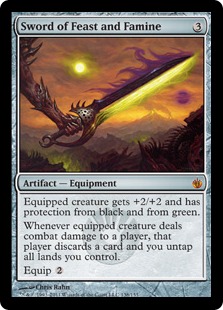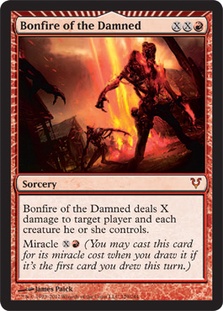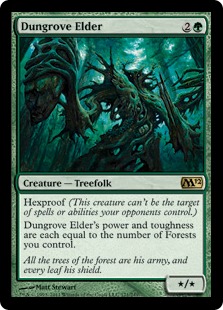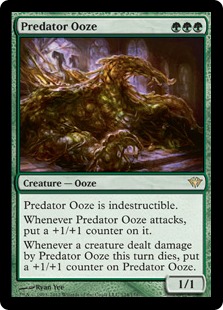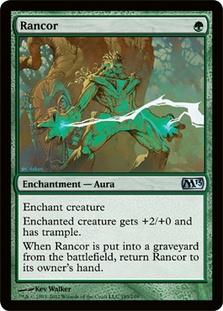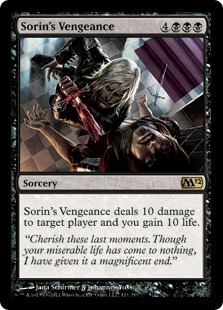I’ve heard some quiet murmurings among the Magic populace that we’re currently in what they call Green Summer. What is this alleged Green Summer they speak of in hushed tones? What does it mean?
I’ll tell you what it is. I’ll tell you what it means. I’m not afraid to come right out and say it. You see, Magic players have really come together as a community for the purpose of helping the environment. We’re working together to make the world a better place, not only for ourselves, but for future generations.
I get it. I’m hip. I’m down with it. I’m on board. I can jive to that tune, or whatever it is you kids say these days. I’ve got a recycling bin set up. I’m thinking about maybe getting a sweet new Prius. I’m putting down my playset of Polluted Dead and picking up a playset of Predator Ooze. You know how that goes. Going Mono-Green isn’t just a choice; it’s a lifestyle.
Err…what’s that? Green Summeractually refers to M13’s impact on the Standard environment, not the actual environment? Damn it. My Prius was just starting to get me some mad street cred, too. I guess the point of all the Green Summer talk is that M13 has brought about a lot of tools for green decks, such as Thragtusk and Rancor. Before M13, green aggro was just starting to edge out Delver decks in terms of popularity and success. Will M13 finally push the green decks ahead of the Delver menace, or will tools like Talrand let the empire strike back?
The Decks of Green Summer
Well, if SCG Open Series: St. Louis is any indicator, the green decks are winning. The Top 8 of the Standard Open featured six green decks, and surprisingly enough, they were all different archetypes.
In the finals, we saw a Naya “mirror” pitting Caleb Durward’s Birthing Pod deck against Lance Behrens’ Podless aggro build. As Naya Aggro is an archetype that I have championed lately, I want to take a moment to look at Lance’s deck.
Creatures (28)
- 1 Llanowar Elves
- 4 Birds of Paradise
- 2 Borderland Ranger
- 3 Blade Splicer
- 4 Avacyn's Pilgrim
- 3 Thalia, Guardian of Thraben
- 4 Huntmaster of the Fells
- 4 Restoration Angel
- 3 Thragtusk
Lands (23)
Spells (9)

There are some things I really like about his card choices. For one, he’s playing zero Strangleroot Geist, which seems completely correct. Strangleroot Geist is one of the hardest cards to cast in Naya, and in a world of Blade Splicer Golems and Restoration Angels, it’s also one of the lowest impact cards.
I also like the addition of a Llanowar Elves to complement the four Avacyn’s Pilgrims and four Birds of Paradise. The best start this deck can have is a turn 1 mana dork followed by a three-drop on turn 2. With eight 3 CMC plays and only three 2 CMC plays, Lance is fully on board with curving directly from one mana to three mana and skipping two altogether.
I’m not sure I agree with playing a Sword of Body and Mind over a third Feast and Famine, but I do like the presence of pro-green swords in his deck a lot. With the metagame flooded by green-based decks, games often end up in board stalls where both sides are looking for a way to break through the other’s defenses. Bonfire and Gavony Township are both strong ways to break parity in these situations, but having Swords provides another dimension as well.
On that note, I think the only real thing I don’t agree with in Lance’s list is trimming down on the number of Gavony Townships. I can understand replacing one with a Kessig Wolf Run since Wolf Run plays nicely with Swords by allowing your creatures to trample over blockers and get the effect of the Sword, but Gavony Township is really one of the strongest effects in the deck. I am very skeptical about playing less than the full set.
In fact, I love the effect so much that I’ve taken to playing Mikaeus, the Lunarch in my Naya list to great results. I’ve been so happy with him that as long as the metagame is saturated with creature-heavy decks, I can’t see playing Naya without him. Mikaeus and Gavony Township work extremely well in tandem together, as Gavony keeps Mikaeus fueled indefinitely by allowing him to remove a counter every turn without dying. For the low price of five mana, all of your creatures get two +1/+1 counters every turn. It’s lunacy. It’s lunasty.
Using Lance’s deck as a base point, here’s the Naya list I would play if I had an upcoming tournament:
Creatures (28)
- 1 Llanowar Elves
- 4 Birds of Paradise
- 3 Borderland Ranger
- 4 Blade Splicer
- 2 Mikaeus, the Lunarch
- 4 Avacyn's Pilgrim
- 4 Huntmaster of the Fells
- 4 Restoration Angel
- 2 Thragtusk
Lands (24)
Spells (8)

I like moving Thalia to the sideboard since with both Swords and Dismember in addition to Bonfire, there are a growing number of spells in the maindeck that don’t synergize with her ability. Also, a lot of popular decks right now are heavily creature-based and don’t care about her ability. I’d rather have her in the sideboard to bring in for the matchups where you really want the effect, like against Delver and control decks.
The next deck I’d like to talk about is an old favorite of mine, Bellowing Tanglewurm Control, or as it’s more commonly known, Mono-Green Aggro.
Creatures (23)
- 3 Llanowar Elves
- 4 Birds of Paradise
- 1 Viridian Corrupter
- 4 Dungrove Elder
- 4 Strangleroot Geist
- 3 Predator Ooze
- 1 Wolfir Silverheart
- 2 Ulvenwald Tracker
- 1 Thragtusk
Lands (24)
- 24 Forest
Spells (13)

He’s baaaaaaaack. Just when you thought that cantankerous chap Ol’ Dunny was gonna go silently into that sweet night, he decided to come back for a reunion tour. Rancor decided it was time to gather up Predator Ooze, Strangleroot Geist, and Dungrove Elder and see about getting the band back together. I, for one, am glad they did.
One of the big problems with Dungrove Elder and Predator Ooze is that they are both really vulnerable to being chump blocked repeatedly as fliers like Restoration Angel plink away at your life total. Rancor and Revenge of the Hunted are both excellent ways to ensure that doesn’t happen by letting these fat, hard to remove three-drops actually connect with your opponent’s face, the way it was meant to be.
One thing I really love about the mono-green deck is that outside of Strangleroot Geist, it’s really hard for your opponent to get a lot of value out of Phantasmal Image, which has long been one of the best ways for blue decks to fight the green aggro decks. Phantasmal Image on Dungrove Elder is what we in the business refer to as a “classic nonbo” and even if they copy a Predator Ooze, you can still force them to sacrifice it with Dismember, Ulvenwald Tracker, or Rancor. This prevents them from getting any additional value out of it.
Mono-Green also makes cards like Doom Blade very hit or miss. Creatures like Wolfir Silverheart or even the lowly Ulvenwald Tracker can demand an immediate answer, but spot removal completely sucks against the likes of Strangleroot Geist, Dungrove Elder, and Predator Ooze. The mixture of threats can really put a burden on your opponent to come up with the right answers to your questions.
I’m really happy with Michael’s maindeck a lot, with one exception. I think the second Ulvenwald Tracker or fourth Strangleroot Geist should be a fourth Llanowar Elves instead. Much like the Naya deck, you want to be playing a turn 1 mana accelerant every game and running less than the full eight really harms your chances of doing this. I think it’s also possible that Arbor Elf is better than Birds of Paradise or that a split of the two is correct. Birds of Paradise has evasion, which can be relevant with Rancor and Revenge of the Hunted, but Arbor Elf naturally attacks for damage, which can sometimes be a difference maker in close games. It’s definitely a choice to consider regardless of which you naturally prefer.
The last deck from the St. Louis Top 8 I’d like to discuss is Joshua Kincaid’s Bant Birthing Pod list.
Creatures (32)
- 1 Solemn Simulacrum
- 4 Birds of Paradise
- 2 Elvish Visionary
- 2 Acidic Slime
- 2 Borderland Ranger
- 1 Sun Titan
- 1 Elesh Norn, Grand Cenobite
- 1 Phyrexian Metamorph
- 3 Blade Splicer
- 1 Stonehorn Dignitary
- 2 Phantasmal Image
- 1 Fiend Hunter
- 3 Avacyn's Pilgrim
- 1 Daybreak Ranger
- 1 Strangleroot Geist
- 3 Restoration Angel
- 1 Deadeye Navigator
- 2 Thragtusk
Planeswalkers (1)
Lands (23)
Spells (4)

This deck is brimming with synergy. It all starts with these three cards:
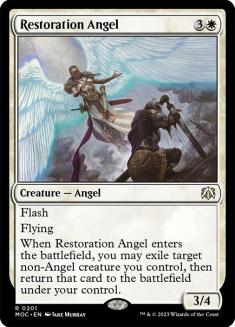
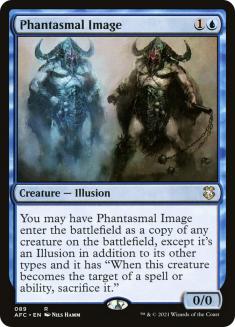
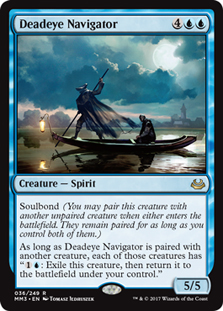
And how they interact with these cards:
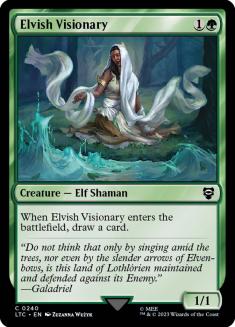


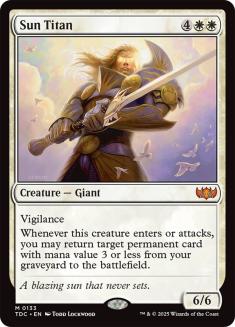
Words can’t actually express how much the idea of bonding a Deadeye Navigator with a Thragtusk excites me. I seriously can’t wait to fully explore the studio space with this deck. I want to exploit all the sweet, sweet synergies this deck has to offer. I want to extract maximum value from every possible interaction. I want my opponents to suffer through every single trigger as I blink a Restoration Angel bonded with a Deadeye Navigator to flicker an Acidic Slime to destroy my opponent’s last blue mana source. Would I like to soulbond again? You can bet your sweet ass I do.
Does wishing this suffering on my opponents make me a bad person? Of course not. There’s nothing wrong with just trying to get a bit of value. Since all the creatures, for the most part, have some sort of enters the battlefield effect, you gain a small edge whenever a creature of yours comes into play. Is gaining these small, incremental edges over the course of a game good enough to compete with all the other powerful decks in the format? I’m honestly not sure, but I can say one thing definitively—this looks like the most fun deck to play by far.
One thing I want to do Joshua’s list is to cut out a lot of the one-of Pod targets and streamline the deck into something that tries to maximize the above interactions as much as possible. I don’t want the deck to have to rely on Birthing Pod to work, and I want all of the cards to be good draws even without a Pod.
I’m thinking something along these lines:
Creatures (33)
- 4 Birds of Paradise
- 3 Elvish Visionary
- 1 Acidic Slime
- 3 Borderland Ranger
- 1 Sun Titan
- 1 Elesh Norn, Grand Cenobite
- 1 Phyrexian Metamorph
- 4 Blade Splicer
- 4 Phantasmal Image
- 4 Avacyn's Pilgrim
- 4 Restoration Angel
- 1 Deadeye Navigator
- 2 Thragtusk
Lands (23)
Spells (4)

I’m not sure exactly what would be in the sideboard of this deck, but I can definitely see some of the one-of Tutor targets Joshua had as sideboard cards to bring in for the matchups they shine in. I also really like the idea of a Ghost Quarter in the sideboard for the Wolf Run Ramp matchup. Being able to search up Ghost Quarter with a Phantasmal Image on Primeval Titan and then using Sun Titan to recur it over and over again gives you an enormous edge in that matchup.
I’m always skeptical of a deck like this that doesn’t play any removal and is basically just 100% creatures or ways to get creatures, but the synergies with the creatures are so powerful in this deck that I’m not sure it matters that you can’t really interact with your opponent’s game plan. I’d love to splash for Bonfire here, but even I’m not that greedy.
Fighting the Green
All the decks I talked about above, and in fact, all six of the green decks in the Top 8 of the SCG Standard Open in St. Louis share one common trait. They are almost entirely comprised of creatures. For the most part, they play between 3-7 noncreature spells, and some of those, like Birthing Pod and Green Sun’s Zenith, are basically just Tutors for more creatures.
This is a great time to play a deck that does nothing but obliterate creature decks. One such deck is a B/W Control list that I’ve seen gaining a lot of popularity on Magic Online lately. I probably run into this deck once every other four-round Daily Event I play in with Naya, and I don’t think I’ve beaten it yet. Joseph Price got 13th at the Standard Open St. Louis with the archetype:
Creatures (7)
Planeswalkers (2)
Lands (23)
Spells (28)

The deck combines life gain, a high number of board sweepers, and a win condition that none of the green decks can interact with: Sorin’s Vengeance. Most of the green decks are well equipped to handle anything that hits play since they are all good at controlling the board. Sorin’s Vengeance dodges that by ignoring the battlefield entirely and just winning the game on the stack. This B/W Control deck basically can’t ever beat a Negate or Dissipate, but those cards are not seeing much play right now, making this an excellent choice if you expect the metagame to stay the way it is right now.
Two other decks that seem well positioned right now are Mono-Black Control and Esper Control. Mono-Black Control looks similar to the B/W Control deck but has a higher focus on artifacts, such as Wurmcoil Engine or Trading Post. Esper Control utilizes the same Sun Titan / Phantasmal Image chain that it’s played for the past year, using Day of Judgment and Terminus to buy enough time to set up its superior end game. These decks all have some issues beating Delver, but as long as Delver is being pushed out of the metagame by aggressive green decks, now is the time to capitalize on these archetypes while they have a chance to shine.
It may be Green Summer right now, but winter is coming.
Thanks for reading,
BBD on Magic Online
@BraunDuinIt on Twitter

